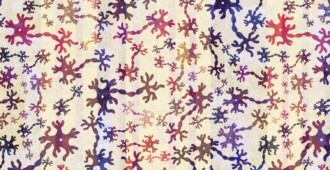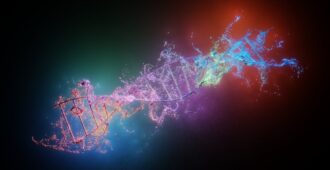From Sunday morning to Tuesday evening last week, there was a lot of talk of MND research going on in Liverpool. The reason for this ‘hotspot’ of discussions was due to the annual meeting of an international consortium of MND researchers taking place at the University of Liverpool. The 10th International Consortium on SOD1 and ALS (ICOSA) meeting took place last weekend (4 – 5 March).
In 2001, five laboratories came together to form ICOSA, where the aim was to share knowledge to design better-informed experiments to understand the rare, inherited SOD1 form of MND. MND Association grantee, Prof Samar Hasnain was one of its founding members. Success of this philosophy of sharing knowledge prior to publication has resulted in several leading groups joining the effort, looking at other causes of inherited MND too.
A tradition of ICOSA meetings is to hold an open meeting for sharing latest results with a wider audience, following their closed meeting. Thus, on Tuesday 6 March, an open meeting was held to allow the exchange of the latest results and ideas between ICOSA members and the UK MND research community.
I attended this one day meeting in Liverpool and I’ve written a mini report on the meeting below, including a couple of highlights.
The first few presenters demonstrated the truly international nature of this collaboration – they had travelled from the snowy landscape of northern Sweden, the sweltering heat (at least in August!) of mid-state Florida and from RIKEN, the large natural sciences research centre, in Japan .
The researchers represented were a mixture of physicists, biochemists and neurologists – an unusually broad spectrum of knowledge and speciality for an MND research meeting. Essentially, their core, joint interest was in understanding how the structure of a protein has such a marked change leading to MND developing or the disease progressing.
The structure of a protein is essentially about folding. The correct folding will mean that the protein can do its job. Folded incorrectly the protein won’t be able to work. An example of incorrectly folded protein is the protein clumps or ‘aggregates’ seen within motor neurones in MND. There is a whole chain of events that lead the appearance of these clumps of protein – and researchers at the meeting discussed every step along the way.
How do proteins fold and why is it important?
When the instructions for making a protein (ie genes) are read and edited by DNA and RNA respectively, they are reading or editing instructions to arrange a set of building blocks in a particular order – there are 20 different types of building block – our amino acids. ALL of our proteins within our bodies are made from specific arrangements of this core set of 20 building blocks. The arrangement of the building blocks determines where the protein folds, in which direction and the shape it makes. There are many possible folding arrangements a protein could make, but it will always try and fold itself into the lowest energy shape (a good way to think about this is the shape where the protein is ‘most comfortable’).
Geneticists know a lot about the beginning of the process (what the sequence of building blocks will be) and biochemists and pathologists know a lot about the end of this process (what the protein does and a what it looks like in the cell when it clumps together) – but the physicists of the MND research world are working on the bit in the middle (precisely where which building block is, in the folded protein).
A change to the sequence of the building blocks, as seen in the proteins made from mutated genes that cause MND, will lead to unusual folding, and damage to the cell – due to the loss of normal function or a trigger for toxicity. So having a complete picture of a protein ‘lifespan’ is really important in understanding what goes wrong in MND and how to fix it.
Unravelling questions about SOD1
People with the SOD1 form of the rare, inherited type of MND have a mistake in the assembly of one building block in the instruction to make the SOD1 protein. Over 160 different, single building block mistakes have been found in this form of MND so far. All of them lead to the development of MND. So that means 160 damaging variations in the folding of the SOD1 protein.
Over 70 other delegates and I heard the latest on how mimicking the effects of these mutations (by changing building blocks of the protein) in SOD1 mouse models tells us more about this cause of MND. It’s even possible to study the different effects of the toxic protein on different cell types essential for motor neurone function. (Although motor neurones carry the messages, they are supported by groups of ‘glia’ cells around them).
Where (the) ‘FUS’ is
Prof Larry Hayward presented his research on a protein called ‘FUS’; mutations in this gene causes another form of the rare inherited MND. The damaged ‘FUS’ protein is found in a completely different place in motor neurones than usual. Images of motor neurones where the FUS is in the centre of motor neurones, as usual, looked a bit like fried eggs; but the location of the damaged FUS in the outside of the cell reminded me of ring donuts! By stressing motor neurones, he showed a video of the proteins moving from the centre to the outside of the cell; and back to the centre when the stress was removed. This all happens very quickly, in a matter of minutes!
C9orf72 – a hot topic
Another highlight of the meeting was the presentation by MND Association grantee Prof Huw Morris on both how the C9orf72 gene mistake was found last year, and also on what’s happened since the results of this finding were announced. In the five and a half months since the 21 September announcement, another 26 reports have been published in this area of MND research. That’s slightly more than one report a week! (To put this in context there are roughly 36 MND reports published a week, total, across a broad range of topics). He commented that one factor that kept him focussed in the long search for this gene defect was the people with MND in his care.
Drug scaffolding to correct damaged folding
Above I mentioned that the physicists work out the precise folding of proteins, knowing where each of the building blocks is within its final shape. They do this by isolating the protein they want to study and placing it in increasingly high concentrations of salt solution to remove literally every molecule of water, until the protein itself comes out of solution and forms crystals. These crystals are then analysed by x-ray crystallography and other analytical chemistry techniques.
For a protein made from a mutated SOD1 gene, x-ray crystallography studies found a hole in the protein folding that may explain why it forms clumps within motor neurones. MND Association funded researcher Dr Neil Kershaw from the University of Liverpool presented the latest results from his research in designing a drug that will ‘prop up’ incorrectly folded SOD1, in the hope that this will remove its damaging effects.
I hope that this report demonstrates that in between the ‘big news’ stories about MND research, steady progress continues to be made in understanding MND and searching for treatments for it.






Hi Belinda,
Thanks for the update! Was there any more discussion of the role of C9orf72 repeats on the cognitive deficits we see in some people with MND? Recent paper by Byrne et al (2012) in Lancet Neurol suggests it could be a significant explanatory variable!
Cheers
Paul
With all the studies this past year – is there a comprehensive list of all the known Familial ALS/MND genetic mutations with a breakdown of percentages of each – including a guess as to how much we don’t know? Also – if there is an ethnographic association, that would be most helpful. For example SOD1 A4V predominately found in North American…etc etc. Thank you! Michelle